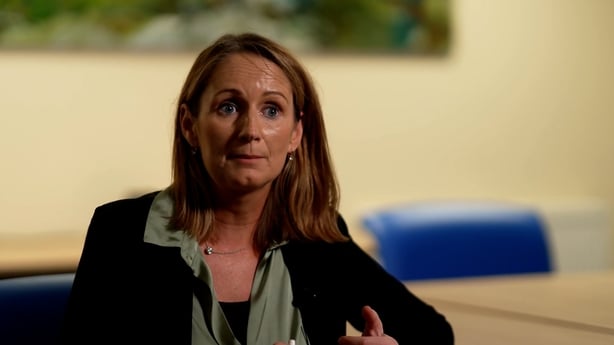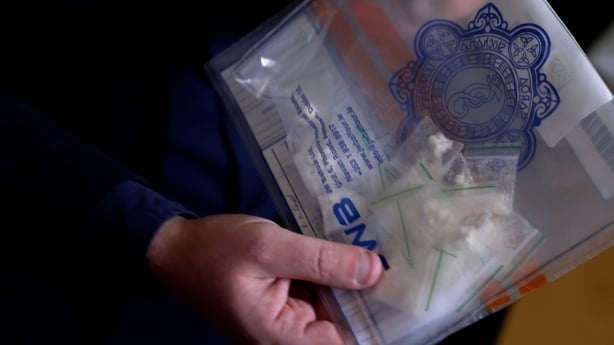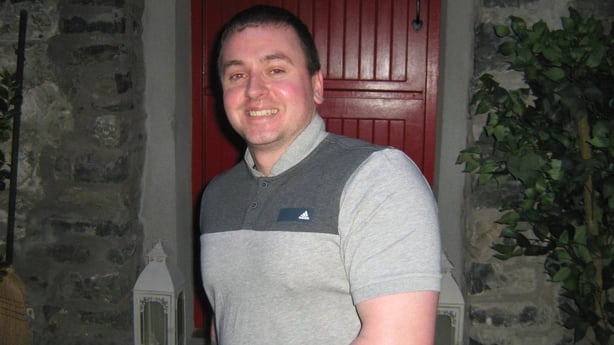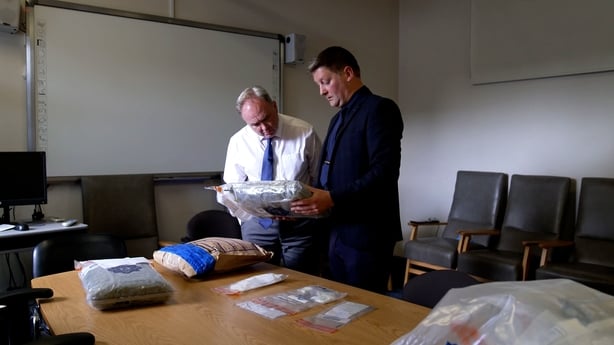When it comes to Ireland's problems with cocaine, Joe Treacy does not mince his words.
"I made the comment last year that it was snowing in Galway. You could 'up that’ and say it is now blowing a blizzard. It’s everywhere, every little village, every little townland, every little boreen with the grass growing down the middle," he says.
He spoke to Prime Time on behalf of Addiction Counsellors of Ireland for a report examining the extent of drug use around the country.
Statistics back up what he and his colleagues are seeing.
The Garda Drugs and Organised Crime Bureau says recent Garda detections of cocaine across the country have increased on the previous year.
"The world in general appears to be in a global cocaine epidemic. Detections for incidents of possession of drugs for supply so far this year are already increased by about 23%," Detective Chief Superintendent Séamus Boland said.
"Our hope is that we'll be able to eventually assist in having an impact in reducing the number of drug deaths that have been occurring, which are quite high in Ireland in recent years," Detective Chief Superintendent Boland added.
The most recent Health Research Board statistics for such cocaine-related deaths related to three years ago, but the evidence of the increase is stark. In 2011, cocaine was identified in 24 of 314 drug-related deaths, while in 2020, that figure had increased more than five-fold. Of 409 drug poisoning deaths in Ireland in 2020, cocaine was identified as the primary cause in 130 cases.
Figures for more recent cocaine-related deaths will not be published until later this year. However, in recent months, addiction counsellors across the country have been reporting a dramatic increase in those seeking help who say cocaine is their primary problem.

In Donegal, a sobering figure was given by Cora McAleer, Assistant Director of Nursing at the county’s Alcohol and Drug Service.
"When I look back at figures five years ago...where people would name cocaine as their substance of misuse - we're chatting about 18, 19, people - jump forward five years, we're chatting 135 to 140 people. That's over a 500% increase."
Bear in mind that that figure relates only to people who have sought help for their cocaine addiction.
When you consider those who are ignoring their addiction, the true figure for cocaine use, in Donegal and throughout the country, is much higher.
Ms McAleer told Prime Time how the HSE offers different forms of addiction treatment, depending on individual needs.
"When someone presents to treatment, you would do the detoxification process. For some people they may, they may detox safely in the community. Others might have to go into a hospital-based setting," she added.
In the midst of these emerging health issues and the increasing number of people seeking support for addiction, An Garda Síochána has sought to tackle and disrupt criminal gangs involved in drug distribution throughout the country under 'Operation Tara'.

Cocaine is not the only drug being smuggled into Ireland, but it is the drug that more and more people are consuming.
There have also been many seizures of cannabis, crack cocaine, heroin, diazepam, ketamine, ecstasy and crystal meth, along with guns and lots of cash, all seized from criminal gangs who control the booming drug trade right across Ireland.
Around 20 organised crime networks have carved up the drug market throughout the country.
Chief Superintendent Séamus Boland describes them more as networks than gangs, as membership can and does change and change often.
"It's extremely fluid. One person can be working with one group one week, and with another group the following week," he said.
While some gangs are involved in a secondary business of making ‘home-grown’ cannabis – in grow-houses dotted throughout the country - all the gangs are involved in getting cocaine into Ireland by any means necessary.
Cocaine is the drug being relentlessly pushed into western Europe by south American gangs, and Irish criminals are capitalising on a demand for cocaine which has never been as high.
It is simplistic but not entirely inaccurate to say that where once Dublin-based criminals distributed drugs throughout Ireland, now rural and regional organised crime gangs are very much part of the criminal picture, and capable of sourcing drug imports without much assistance from Dublin based cartels.

The conviction of Sligo crime boss Barry Young for the crime of directing the activities of a crime gang is the best example yet of how regional crime has evolved to show how local criminals can and do control much of the local drug trade.
Young led one of the four criminal gangs identified by Gardaí as operating in the north-west. He had about twenty criminals working for him. He was brought to justice this summer when he pleaded guilty at the Special Criminal Court and was jailed for 11 years.
At Sligo Garda station, Chief Superintendent Aidan Glackin says it was the cracking by detectives of an encrypted phone which was Young’s undoing.
"There was 30,000-odd messages. There was a whole load of video calls and WhatsApp messages that gave us a very clear picture in relation to the structure of Young's Gang, which we believe exceeded 20 people. We could see that Young's links were far reaching and have seen his use of sources in Spain to source drugs, to transport drugs."
Sligo Gardaí and the Criminal Assets Bureau have gone to Alicante to chase Young’s criminal cash. Chief Superintendent Glackin says it was important for people in the north-west to see that a leader of a gang was brought to justice.
"Anybody that's involved in organized crime, particularly in the importation, sale, supply of drugs, are driven by greed, fueled by arrogance and reckless as to the consequences of their action," he said.
"We have seen right across the country where drug intimidation has taken place - where families are in distress, where families are paying drug debt through intimidation. So, the ripple effect of the actions of people like Barry Young can be seen right across society."

In Sligo, Garda James Conneely shows Prime Time cannabis, crack cocaine, cocaine and heroin.
"The cocaine was in bags each valued at 70 Euro. The bags are referred to as baggies. These bags in this seizure are valued at €2,500," the drugs officer tells me.
Joe Treacy from Addiction Counsellors of Ireland says the demand for cocaine is being driven by "corporate, affluent, well-heeled people."
"They have to look inside their heads and say I’m contributing to criminality and contributing to the development of a very very dangerous drug," Mr Treacy said.
At Bushy Park Addiction Centre outside Ennis, counsellor Maurice Crowe says it is mostly men who are taking cocaine.
"The substance gives a person a feeling of confidence. The predominant number who are using it are in the 25 to 35 age categories. Predominantly 75% to 79% male. And of those 75% of them are in employment. The people we have met so far go from 18 years of age up into their sixties."
Many young men who take cocaine are body conscious and, where once they took alcohol, are now snorting cocaine instead, Mr Crowe says.
"Snorting has ramifications for the person's health. They can start to have difficulty with their nasal breathing. They can have difficulty with nosebleeds. They can have problems with their septum," he added.
Right across the country, criminals are exploiting a huge demand for cocaine, and the full long-term effects for those consuming this drug and the wider community are not yet known. But some impacts are already being felt.
"It impacts on every aspect of a person's life, on every aspect of a family's life," Mr Crowe says.
"What we are finding is that families now are beginning to isolate in areas of the Midwest that we work with. You have communities beginning to be impacted by this because people withdraw as a family from their communities, because there's a lot of shame, there's a lot of guilt."
Security Correspondent Barry Cummins and producer Colm Kirwan's special report on Ireland’s cocaine reality features on Prime Time on 31 October on RTÉ One at 9.35pm.







